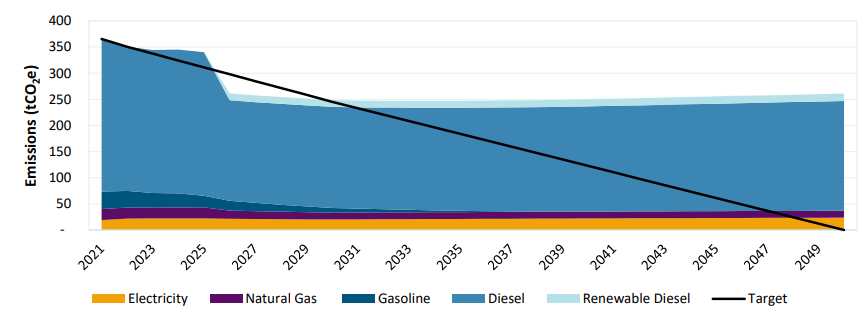Gibsons council members endorsed a Corporate Climate Action Plan (CCAP) created by staff and the Community Energy Association during their Oct. 22 committee of the whole meeting, and staff have been directed to implement the plan into their 2025 work plans and budgets.
The town of Gibsons adopted its first Community Energy and Emissions Plan (CEEP) in
2010 aiming to reduce greenhouse gas emissions, as part of its commitment to the B.C. Climate Action Charter, the report states.
As the town works toward being carbon neutral in its operations, the CCAP will provide information on reducing emissions and developing strategic priorities for the next five years.
The report presents several benefits of reduced greenhouse gas emissions such as reducing local government energy costs, improving climate change resilience and providing a more comfortable working environment for staff and a healthier indoor environment for visitors.
The report includes more than 20 recommended climate actions, including building energy audits, implementing building energy retrofits, building energy-efficient infrastructure and implementing Solar PV installations.
Transportation-specific recommendations are also put forward, such as a low-carbon vehicle purchasing policy, fuel-efficient driver training, an anti-idling policy and utilizing 30 per cent renewable diesel in Gibsons' fleet and contracted services fleet.
Dr. Ali Ergudenler, Community Energy Association project manager, said it is projected that the town's greenhouse gas emissions will increase slightly in the future if no action is taken and that implementing the proposed actions would help reduce said emission “significantly” in the next five to seven years.
The report states, “There is potential for substantial cost savings on electricity, a majority coming from energy efficiency upgrades in buildings and solar PV installations.”
Gauging six categories, the plan expects to save 92 tonnes of carbon dioxide equivalent and $62,000 annually by 2030 in corporate greenhouse gas emissions and energy costs.
Coun. Annemarie De Andrade asked how community emissions were calculated in the CCAP for comparison with the Corporate emissions.
Michelle Lewis, the natural asset technician for Gibsons, answered the community emissions numbers were from the SCRD's 2022 Greenhouse Gas Emission Report.
A community energy and emissions inventory will be done with Ergudenler and his team as part of the Town’s “Low Carbon Resilience Climate Action Plan”, which will start this year's fourth quarter, staff said.
De Andrade asked if there could be a single, specific line item for climate action on the upcoming budget instead of distributing it between different departments.
William Wallace, Gibsons’ director of finance explained it is critical to break it apart into different sections so the town can see how it’s transitioning from a climate perspective.
“The thing about climate change and transitioning is not about line items and budgets, it's about actions and choices in your procurement and integrated asset management sheets show you that,” he said.
Coun. David Croal commented that he thinks the town needs to encourage the film industry that comes into the community to be green.
“When you look at the town in this report, they're saying the town's emission is 351 tons of CO2 emissions, and eight episodes of an hour-long TV series is 568 tons of CO2 emissions,” Croal said. “So I think we really need to advocate, if we're going to practice this as a community, we need to extend it to people who come in.”
Council members unanimously voted to endorse the Corporate Climate Action Plan and direct staff to incorporate the action items into 2025 work plans and budget.
Jordan Copp is the Coast Reporter’s civic and Indigenous affairs reporter. This reporting beat is made possible by the Local Journalism Initiative.
Words missing in article? Your adblocker might be preventing hyperlinked text from appearing.



